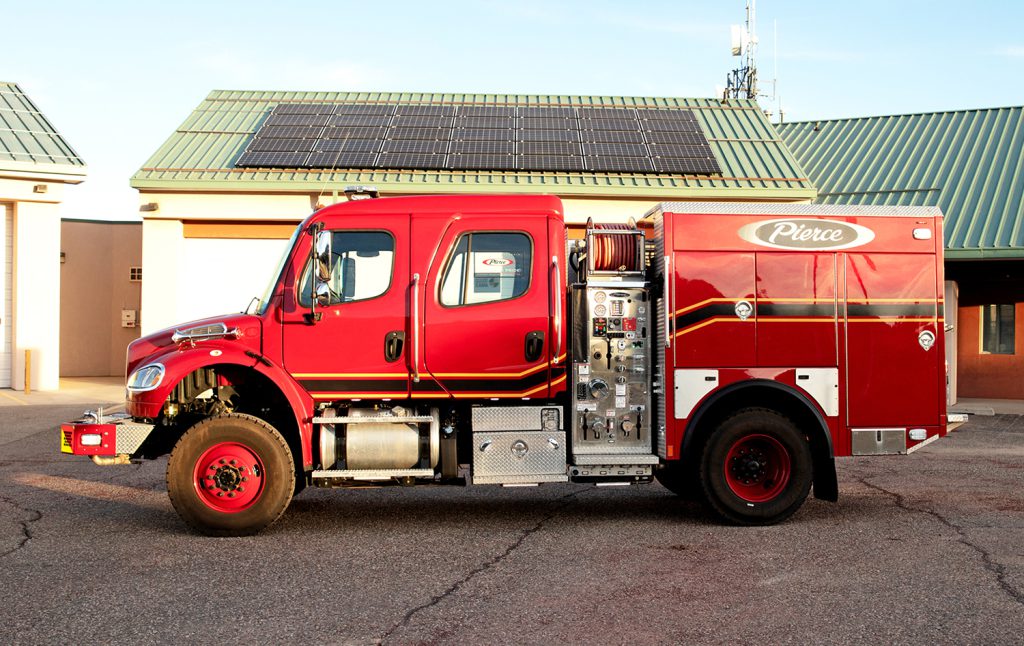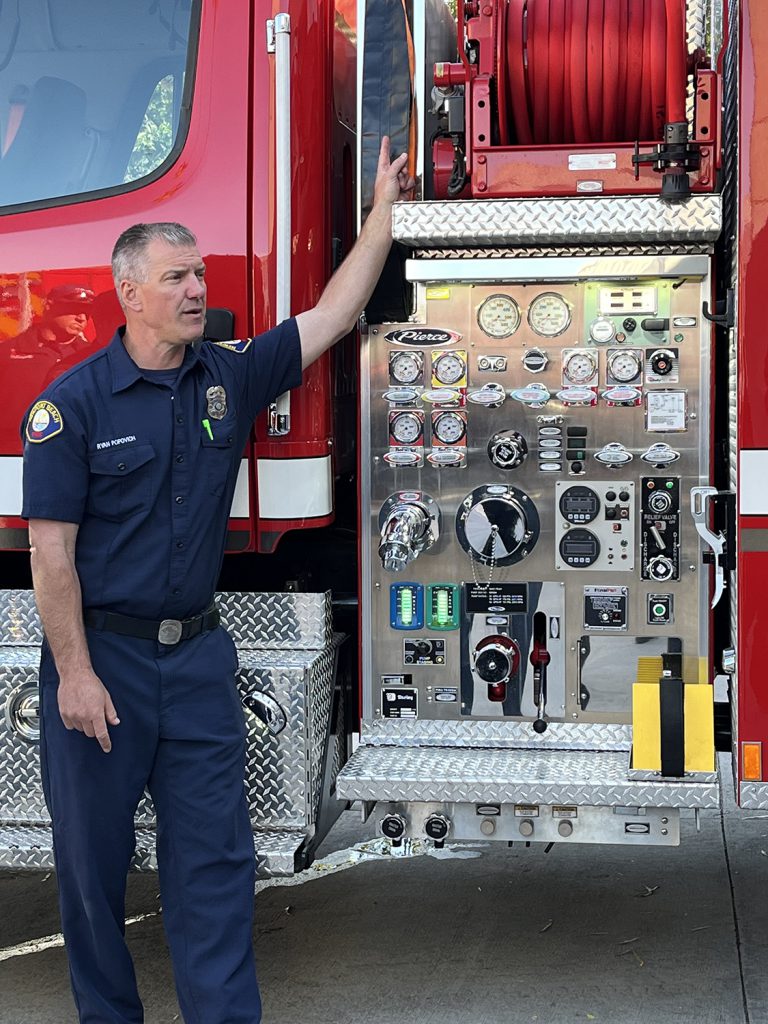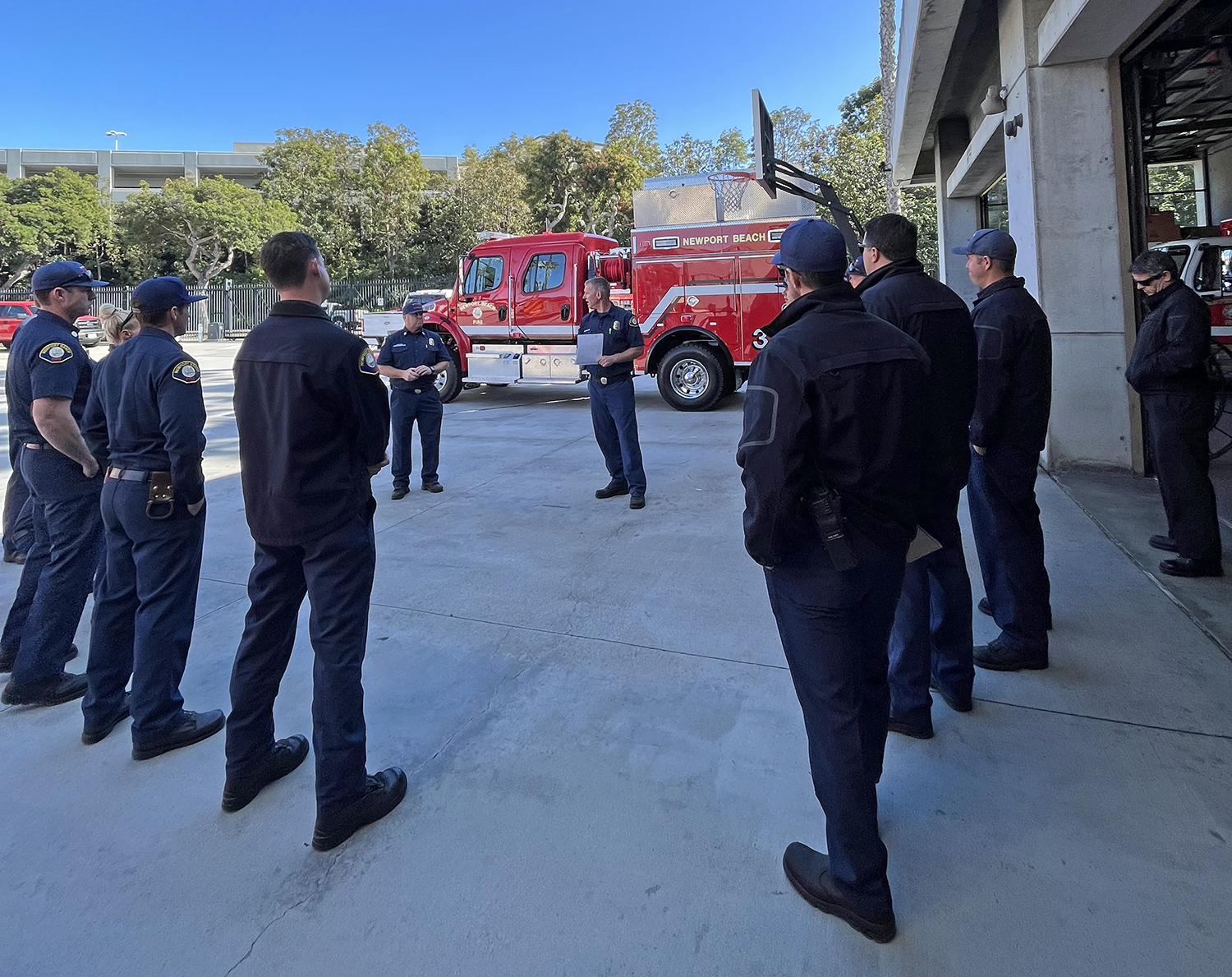
For a mere $1,151,117, one can order a 4WD Mercedes Benz G650 Maybach Landaulet, complete with rear seat massage and thermal cup holders — so perfect for meeting the unfathomable challenges of fashionably inching up one’s fog-moistened driveway.
The Landaulet’s sticker price is nearly twice that of probably the most capable, rugged, and best equipped four-wheel drive vehicle ever to grace the roads of Newport Beach: the Fire Department’s newly inaugurated 360-horsepower Type 3 off-road fire truck.
It’s main purpose, according to Engineer Ryan Popovich, is protection of our urban/wildlife interface in Corona del Mar, Buck Gully, Newport Coast, Ridge Park and Crystal Cove — as well as the neighboring Laguna wildlands.
Although the need for this type of truck has been discussed for about 15 years, Popovich apprised, acquisition was finally determined in 2019, especially in this era of increased fire outbreaks throughout the state, whose mega-acreages have been victimized by the incendiary effects of global warming.
For the next several weeks, Popovich will head orientation and hands-on training on the truck for the city’s 133 firefighters.

Not only will this Type 3 vehicle help to guard Newport’s brushy zones, it will be made available “as part of our mutual aid agreements” with such cities as Anaheim, Huntington Beach, Costa Mesa, Fountain Valley, Brea, Fullerton and Laguna — as well as with other districts throughout the state if we have nothing happening in our backyard,” Popovich said.
Built by Pierce of Appleton, Wisconsin, the beefy fire engine was designed by a four-person team of veteran Newport firefighters, who crystalized the “small” details that make this truck unique, such as placement of capacious stowage areas to house the department’s existing firefighting inventory.
Two years in construction, it was created with two purposes in mind: to benefit common city calls, and “to have the ability to save one of our own” in the wilder areas before support arrives.
The truck will be handled by a crew of four at all times, including a paramedic with complete life-saving equipment to “answer advanced-life-support-category calls.”
The truck became operational at an interesting time. With the recent heavy rains brought by this year’s unusually potent atmospheric rivers, drought-thirsty vegetation throughout the state should proliferate.
However, said Popovich, “when it dries out this summer, the fire threat increases tremendously.”
Unable to predict when or where fires will erupt, or how large the outbreaks will be, it’s impossible to say how much use the truck will see, but Popovich observed that “cities with like engines stay very busy.”

To learn its many features could take us into next fire season, but here are a few of interest: Its wheelbase measures 185 inches (not counting overhangs); it stands over 10-feet high, and spans eight and one-half feet wide—which makes handling on some fire roads akin to a tightrope walk.
Fifty gallons of fuel feeds its 360-horsepower Cummins diesel engine. It’s six-speed transmission in low/low and in 4WD will take her up a 30-degree slope, and slow her down to the proverbial crawl on sharp descents.
The main fire pump spits out up to 521 gallons of on-board water per minute at 150 PSI maximum. Theoretically, the water would last just five minutes, but Popovich explains that both water pressure and water demand vary according to the situation, so that supply could last for an indefinite period of time.
An adjacent tank contains 31 gallons of foam, which is used to separate oxygen from fuel. It’s the go-to choice for petroleum-fueled fires.
In terms of hoses, the truck carries a total of 1,200-feet of hose in varying lengths, in sizes ranging from 1” up to 2 1/2” in diameter. The real challenge in firefighting may not be the extinguishing of flame, but the rolling back up of those hoses to fit into their storage spaces.
Additionally, jutting out the front of a bumper, whose robustness would intimidate a charging rhino, is a heavy-duty winch with a huge responsibility: pulling the truck up a hill or out of a ditch or mud hole, or clearing obstacles of various sizes out of the way, or to safety.
The Warn winch and cable is rated at 15,000 pounds, while one of its metal shackles enjoys a max working load of 137,000 pounds. Cables and straps can handle just about any identifiable load.
In short, this truck is a brute, but under the management of Newport’s highly trained fire crews, it is capable of doing some very delicate, life-saving work.




